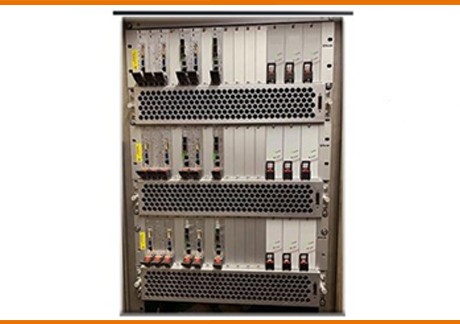Recab: How HCI created a data center revolution. In the past, data centers were big – They had to accommodate isolated, single-purpose hardware for every IT function.
As a result, organizations had to invest vast sums in multiple hardware units, many of which sat idling the majority of the time, creating an environment of high cost and low efficiency.

The development of HC
In recent years, there has been a new way of thinking around data centers that allows organizations to consolidate resources in a different way. By making data centers more hardware efficient, companies can be more agile in the way they manage their computing systems.
Converged infrastructure
First, converged infrastructure brought together diverse IT elements into one box, merging computing units, storage, and networking technologies. All to create an integrated and unified system that could perform multiple business functions. This gave organizations flexibility, increased available real estate and saved significant costs. But it still required hardware. Companies still needed to provide a physical location for their servers.
Hyperconverged infrastructure(HCI)
Hyperconverged infrastructure (HCI) goes one step further. HCI is hardware-agnostic and has heralded the emergence of software-defined data centers (SDDC). Virtualization software enables hardware to be abstracted and migrated to the cloud. And that way creating a single interface with lower operational costs, improved performance for every application, better data governance, and no vendor lock-in.

On-demand computing
Most important of all, it gives companies access to on-demand computing, optimizing hardware only when you need it and exponentially increasing scalability and processing capacity. HCI solutions give many organizations in diverse vertical markets the versatility they need.
With HCI, there is almost limitless possibility in terms of suppliers and compatibility. You can eliminate vendor lock-in and over provisioning, meaning greatly reduced infrastructure spending across your entire data center.
Customized HCI solutions from Recab
Recab provides bespoke HCI solutions for anyone looking to drive IT efficiencies throughout their business.
One of our areas of specialism is in delivering support for customers operating in environments requiring rugged hardware, such as the defense and aerospace industries. These are areas where computing technology not only has to be hyper-connected but meet tough certification standards and be resistant to among other extreme shock, vibration and wide temperature ranges.
Simplicity and scalability of best-in-class HCI technology
This kind of customer brief has a high level of complexity and, in the past, would have necessitated many different functions, each requiring an individual hardware unit. But IT infrastructure in these industries has come a long way. Now, Recab can provide customers with rugged and resistant hardware from the best suppliers around the world, with the simplicity and scalability of best-in-class HCI technology.
Recab experience and knowhow
We also have the experience and knowhow to put customer plans into action, working alongside them on visualization and practical implementation to set them up for long-term success. Recab’s vast network of suppliers from all over the world means we can always deliver the best value, and our technical expertise allows us to provide easy, compact HCI solutions to fit any customer brief.
Key Characteristics
- Recab’s latest innovation for our Advanced Modular Computers product family;
- Virtualized & VMware Certified Rugged Cloud Server for Embedded Defence Applications, deployed in Naval vessels.
- Rugged by design, 3U OpenVPX COTS technology. Based upon standard 19” rackmount dimensions – shallow depth (below 300 mm)
- Air-Cooled system, conformal coated electronics
- Smart & silent 2U fan-tray with IPMI over Ethernet control & monitoring
- Heterogenous system supporting;
- Up to 5 x 16 Core Intel Xeon D
- Up to 5 x Coprocessors @ PCIe x16
- GPU: Nvidia Tesla P6 or Quadro RTX5000
- FPGA: Xilinx Kintex-7
- Up to 40G Ethernet Blade-to-Blade Interconnection
- Multipurpose scalable platform – computing, switching, storage and graphical processing.
- Redundant power (AC and DC version available)
- Product Lifecycle Management (PLM) optimized design;
- Add COTS HW resources when needed




